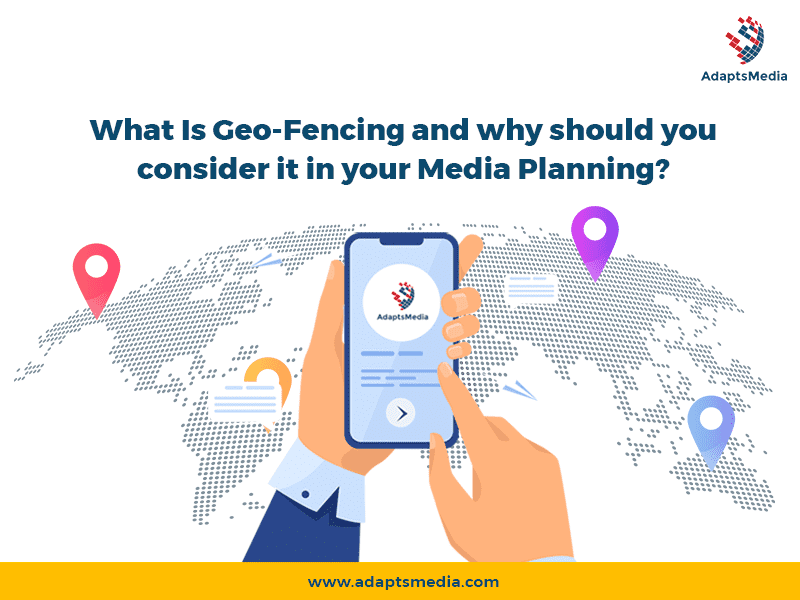Geo-Fencing marketing is an effective technique for bringing more local clients by targeting the audiences with precision strategies. Recently, there has been a more than 60 percent rise in sponsored social media spending, which has resulted in a deluge of promotional messages received by customers from the respective marketers. This is also why the click-through rate (CTR) is now around 0.5 percent through all ad types and locations. Ideally, this is where Geo-Fencing may assist businesses, particularly small enterprises.
There is a lot to know about Geo-Fencing, its pros and cons, and various associated tools. Moreover, acknowledging some of its primary benefits and how marketers may begin leveraging this technology by adding it to their media planning will also be explored! So give a read till the end.
What Exactly Is A Geofence, And How Does It Work?
According to the Oxford dictionary, a geofence is “a virtual geographic boundary set by GPS or RFID technology.” Consider a geofence as an invisible fence, responding when a mobile device passes across the “fence.” Geofences work by triggering reactions that send notifications to mobile devices when users enter or depart the geofenced zone.
Geo-Fencing has many uses, from marketing and social media to time tracking in the office. Retailers, for instance, can use Geo-Fencing to notify nearby consumers about a fantastic discount. The passers-by might be informed about the restaurant’s daily offer, or so.
Through GPS, Bluetooth, and beacons, you can track a customer’s position, and there are three methods to use this technology to target them: geotargeting, Geo-Fencing, and beaconing.
Geo-Fencing is the virtual perimeter you build around a specific geographic location to deliver targeted messaging. In contrast, geotargeting is focused on delivering targeted advertising to desktop users based on their location, and beaconing is focused on transmitting targeted messages and information to nearby mobile devices.
A few actions are required to ensure Geo-Fencing works effectively. To begin, a GPS or RFID-equipped software must draw a virtual border around a specific area. Then, using polygonal Geo-Fencing software, the user needs to locate the spots on a map that create the capture boundary. For example, when designing a mobile app, one may utilize Geo-Fencing software to construct a 100-foot circle on a platform like Google Maps API. In this case, when the device enters or leaves the virtual geofenced region, it will trigger a reaction. Users must opt-in to location services on their gadgets (via GPS, Cellular, or Wifi networks) to utilize Geo-Fencing. End-users can also set up geofences using mobile apps. For example, you may specify an address or location for an alert or push notification, like iOS Reminders. A reminder app might also give a notification when the target audience reaches a particular spot.
Why Should You Consider Geo-Fencing In Your Media Planning?
Businesses use Geo-Fencing to define specific data collecting zones by placing points on a map to form a shape, usually a closed geometric shape (like a rectangle, circle, or any polygon). This procedure ensures that the enterprise obtains information on each user who enters the geofenced or marked region. Here’s why you should consider it while creating a media planning strategy:
- Reaching out to clients- Geo-Fencing allows you to reach out to consumers appropriately and in the right place. The technology’s distinguishing feature is interacting with clients as soon as they reach the geofenced zone. This implies you may send out promos to your clients at the exact time they are available to visit your shop.
- Increase local sales- You may construct more successful local marketing campaigns using Geo-Fencing. Local marketing can assist you in increasing conversions and expanding your business by bringing in more and more prospects.
- Boost Engagement- Increases consumer engagement by sending customized alerts using Geo-Fencing. When you provide personalized offers at the ideal moment, you boost the chances of your audience engaging with your brand and visiting your business. If your geo-push alerts make sense to your customers, the chances of them engaging with your venture increase.
- Customize the client experience – You may deliver offers suited to your consumers’ preferences and interests. This implies that they will be interested in yours even if they are bombarded with meaningless marketing messages. Any personalized marketing campaign is more likely to succeed, and Geo-Fencing may help you get there.
- Increase brand awareness– Geo-Fencing marketing allows you to communicate with your clients directly, and this communication would unavoidably bear your brand’s imprint. Your brand recognition soars as more customers interact with your communications.
- Outperform your competitors- What if your opponent is just next door? Would you let them steal your customers or take action? Create a geofence around your competitor’s business and offer a tempting discount to everyone who enters. Customers would be rushing to your shop/store in no time!
Effective Ways To Incorporate Geo-Fencing Into Your Marketing Strategy
To begin, you must determine who your target audience is. As this is highly targeted and location-based marketing, you must thoroughly understand your clients and speak their language. Here’s what you should do to incorporate Geo-Fencing into your marketing strategy:
- Restrict your geographic area.
A geofence that is too big will lose its efficacy. The consumers will barely travel kilometers away from your shop to save money. So, always keep your Geo-Fencing to a five-minute travel radius (walking or driving). Remember that the geofence targets prospects who are merely minutes away from your business.
- Call to Action:
Having a clear call to action that requires a quick response is critical. Because Geo-Fencing targets those already in your demographic region, offer them an incentive to enter through your front doors. Geo-Fencing doesn’t work for generic announcements like ‘Welcome to the grand openings’ or ‘Flat 50% Off All Week.” When Geo-Fencing, be more concise and build urgency with your marketing. E.g., Last day to get cashback + 45% off storewide! or so.
- Marketing Techniques
For optimal results, use various target marketing approaches. One marketing tactic won’t produce a high ROI. To target different audiences, Geo-Fencing may be combined with content marketing, remarketing, search engine advertising, display advertising, and video advertising. Google Adwords, Facebook, and Instagram all offer Geo-Fencing for free.
- Know Your Crowd & Create an Ad That Works
Understanding your target demographic is critical to every marketing strategy. To increase the precision of your ad targeting methods, identify their ages, genders, hobbies, buying patterns, and things like what people enjoy or what drew them to your brand! Beyond these questions, knowing your target demographic may help you write captivating text and develop effective ads. Don’t only sell your product. Highlight in-store deals or provide incentives for responding to the ad. They may already recognize you or about your venture, so give them some solid reason to come in.
Bottom Line
One of the most successful methods to reach your target audience is using geo-fencing, a type of customized marketing. Although Geo-Fencing technology has been available for a while, its applications have advanced significantly in recent years. With Geo-Fencing advertising, you can take your media planning to the next level, promote your business, and generate massive profits.
Don’t miss out on the opportunity to gain a competitive edge. Contact our team for expert assistance.

